Welcome to my comprehensive guide on caring for dwarf puffer fish. As a professional copywriting journalist and an avid fish enthusiast, I want to share with you everything you need to know about dwarf puffer fish care. These small but mighty aquatic creatures require specific care to thrive, and I’m here to provide easy-to-follow tips and advice.
Whether you’re a beginner fish keeper or have experience caring for other aquatic pets, this guide will provide valuable insights into creating the perfect environment for your adorable dwarf puffer fish. From setting up the ideal tank to feeding and maintenance, I’ve got you covered.
Table of Contents
Key Takeaways
- Proper care is essential for the well-being of dwarf puffer fish.
- An adequate tank setup, feeding schedule and diet, and compatible tank mates contribute to their overall health.
- Preventing and treating common diseases is crucial in maintaining a healthy environment.
- Breeding dwarf puffer fish requires specific conditions and care.
- Mimicking their natural habitat enhances their quality of life.
Setting Up the Perfect Dwarf Puffer Fish Tank
Creating the ideal environment for your dwarf puffer fish is essential to their overall health and happiness. Here are some key factors to consider when setting up your tank:
Tank size
The recommended tank size for dwarf puffer fish is a minimum of 10 gallons, with a length of at least 20 inches. This will provide enough space for your puffers to swim and explore. Keep in mind that these fish are territorial, so overstocking the tank can lead to aggression and stress.
Filtration system
A good filtration system is crucial for maintaining water quality. To keep the water clean, an efficient filter that can handle the biological waste produced by your puffers is essential. Make sure to follow the manufacturer’s instructions and replace the filter media regularly.
Lighting
Dwarf puffer fish prefer a dimly-lit environment, so it’s best to keep the tank out of direct sunlight or bright artificial light. Use low-intensity lighting to mimic their natural habitat, and provide them with plenty of hiding places.
Temperature
The ideal temperature for dwarf puffer fish is between 75-82°F (24-28°C). Use a reliable aquarium thermometer to monitor the water temperature and a heater to maintain a consistent temperature.
Decorations
Decorations, such as plants and rocks, not only provide visual appeal but also create hiding spots for your puffers. Live plants are an excellent option as they provide oxygen and help maintain water quality. Keep in mind that dwarf puffer fish are notorious for uprooting plants, so choose hardy species or use decorations that won’t harm your fish if ingested.
Substrate
The right substrate is essential for a healthy tank environment. A sandy substrate is best for dwarf puffer fish, as they like to dig and bury themselves. Avoid using gravel, as it can lead to impaction if ingested.
By taking the time to set up the perfect tank, you’ll be providing your dwarf puffer fish with a comfortable and stimulating environment that will ensure they thrive in your care.
Feeding Your Dwarf Puffer Fish
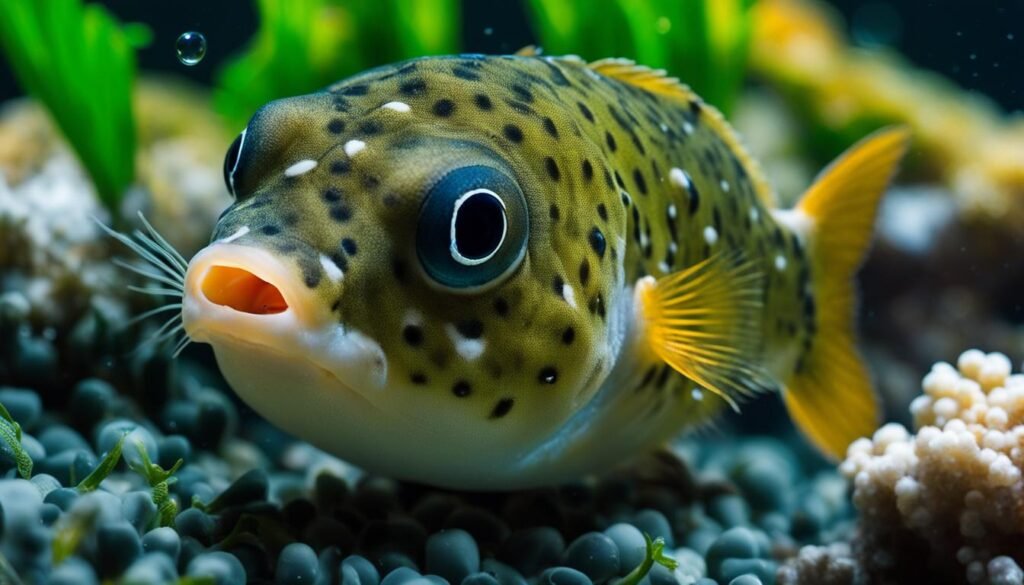
Feeding your dwarf puffer fish a well-balanced diet is crucial for their overall health and happiness. As carnivorous creatures, they require protein-rich foods, such as live or frozen brine shrimp, bloodworms, and small snails.
It’s essential to avoid overfeeding your puffers, as they can quickly become obese and suffer from health issues. A general rule of thumb is to feed them once or twice a day, only what they can consume within a few minutes.
It’s also important to provide a variety of food to avoid monotonous eating habits, which can lead to nutritional deficiencies. Consider introducing small pieces of shrimp or crab meat to their diet, which they will enthusiastically devour.
Dietary Supplements
“Supplementing your dwarf puffer fish food with vitamins and minerals can enhance their health and coloration.”
You can purchase dietary supplements from pet supply stores or choose to provide them with fresh vegetables and fruits, such as spinach or cucumber. Be mindful not to overfeed them on supplements, as this can have adverse effects.
Observing their Eating Habits
Observe your dwarf puffer fish feeding habits to ensure they are consuming enough food and thriving. If you notice a decrease in appetite or strange behavior, it may indicate underlying health problems or stress.
Here are some tips to ensure your puffers are eating correctly:
- Remove any uneaten food after feeding time to prevent it from spoiling and contaminating the water.
- Provide enough food for all your fish and don’t let one dominate the feeding frenzy.
- Feed your puffers during the day when they are active and ready to eat.
By providing a balanced diet and observing your dwarf puffer fish’s eating habits, you can ensure they remain healthy, happy, and grateful members of your aquatic family.
Compatible Tank Mates for Dwarf Puffer Fish
One of the most significant challenges of caring for dwarf puffer fish is choosing compatible tank mates. Although these tiny fish may seem harmless, they are feisty and territorial. Other fish may become targets for aggression, leading to injury or even death.
The key to success is selecting species that are peaceful and can coexist with your dwarf puffer fish. Here are some suitable tank mates for dwarf puffer fish:
| Fish Species | Notes |
|---|---|
| Otocinclus Catfish | A peaceful species that eats algae and doesn’t compete for food. |
| Neon Tetras | Peaceful, colorful, and active, making a great addition to your aquarium. |
| Cherry Shrimp | Hardy and easy to care for, they help keep your tank clean from algae and debris. |
| Kuhli Loaches | Peaceful, bottom-dwelling fish that help keep your tank clean, but you must keep them in groups of at least three. |
Keep in mind that you should avoid larger or more aggressive fish that could harm your dwarf puffer fish. Also, make sure to provide ample hiding spots and visual barriers within your tank to help reduce the risk of aggression.
If you have any concerns or questions about compatible tank mates, consult with a knowledgeable aquarium professional or do further research to ensure the safety and well-being of all your fish.
Dwarf Puffer Fish Diseases and Prevention
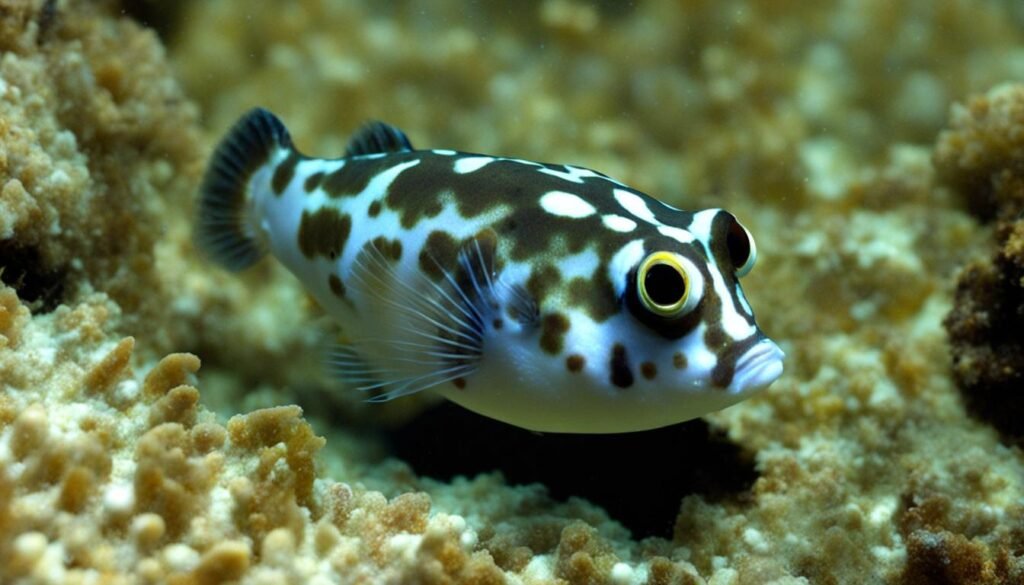
As with any pet, dwarf puffer fish can be susceptible to various health issues. In this section, I’ll discuss common ailments and their prevention, so you can keep your little aquatic buddies healthy and happy.
Common Diseases
Dwarf puffer fish can be affected by several diseases, including bacterial and fungal infections, parasites, and tumors. These diseases can manifest in various ways, such as discoloration, lethargy, loss of appetite, abnormal swimming, and bloating.
A bacterial infection can occur due to poor water quality or injury. Symptoms include open sores and redness around the affected area. Fungal infections are caused by poor water quality and can lead to white patches on the dwarf puffer fish’s skin or fins. Parasitic infections can manifest as white spots on the body and fins, or the fish scratching against objects in the tank. Tumors on dwarf puffer fish are rare, but they can occur, causing abnormal growths on the body.
Prevention
Preventing diseases is vital to keeping your dwarf puffer fish healthy. One of the most crucial preventative measures is maintaining clean water and good tank conditions. Regular water changes and maintenance will minimize the risk of bacterial and fungal infections. It’s also essential to avoid overstocking the tank, as overcrowding can lead to stress in the fish, increasing the risk of disease.
Quarantining new fish before adding them to the tank can also help prevent the spread of diseases. When purchasing new fish, ensure that they are healthy and show no signs of illness. Additionally, feeding your dwarf puffer fish a balanced diet of live and frozen foods will provide the necessary nutrients to keep their immune system strong.
If you suspect that your dwarf puffer fish is sick, quarantine the fish and consult with a veterinarian who specializes in aquatic animals. Early detection and treatment are essential to prevent the spread of disease and save the life of your beloved dwarf puffer fish.
Breeding Dwarf Puffer Fish: A Fascinating Journey
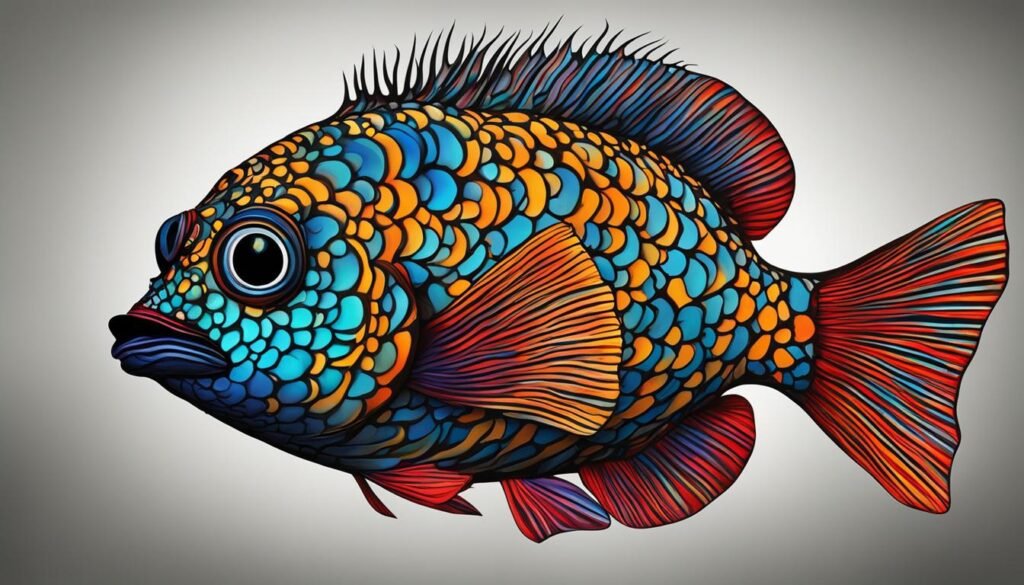
Breeding dwarf puffer fish can be a rewarding and exciting experience for aquarists. However, it’s important to note that there are some challenges involved, and it’s not recommended for beginners.
To successfully breed dwarf puffer fish, you’ll need to create the right conditions for your fish to spawn. This involves ensuring a healthy and stress-free environment, maintaining the correct water parameters, and providing appropriate food.
Creating the Right Conditions
The first step in breeding dwarf puffer fish is to ensure that your fish are healthy and mature enough to breed. Female puffers typically reach maturity at around six months of age, while males may take up to a year.
Once you have mature puffers, you’ll need to create the right conditions for them to spawn. This involves providing a suitable breeding site, such as a smooth rock or plant leaf, where the female can lay her eggs.
It’s also important to ensure that the overall tank environment is conducive to breeding. This means providing plenty of hiding places, as well as maintaining the correct water temperature, pH levels, and water hardness.
Spawning
Dwarf puffer fish are known to be picky about their partners, and it’s essential to have a compatible pair for breeding. This typically involves purchasing a male and female of the same species, or purchasing a group of juveniles and allowing them to pair off as they mature.
Once your puffers are ready to mate, you’ll notice the male displaying courtship behavior, such as chasing and nipping at the female. When the female is ready to lay her eggs, she’ll choose a suitable breeding site and deposit her eggs there.
After spawning, it’s important to remove the adults from the breeding tank to prevent them from eating the eggs or fry.
Caring for the Eggs and Fry
The eggs will typically hatch within two to three days, and the fry will emerge from the breeding site within another three to four days. At this point, you’ll need to ensure that the fry have access to appropriate food, such as newly hatched brine shrimp or crushed flakes.
It’s also crucial to monitor the water quality in the breeding tank carefully, ensuring that the ammonia and nitrate levels remain low.
Did you know that dwarf puffer fish fathers are known to guard and care for their eggs and fry, making them one of the few fish species where the males take on this role?
Creating a Natural and Stimulating Dwarf Puffer Fish Habitat
As mentioned earlier, creating a suitable habitat for your dwarf puffer fish is essential to their well-being. In this section, I’ll walk you through the steps to create a natural and engaging environment for your little aquatic friends.
Adding Plants to Your Tank
One of the best ways to create a natural habitat for your dwarf puffer fish is by adding aquatic plants to your tank. Not only do they provide a visual element, but they also help to maintain good water quality by absorbing nitrates and other harmful chemicals. Some great plant options for dwarf puffer tanks include Java moss, Anubias, and Amazon sword plants. When choosing plants, ensure you choose ones that won’t be uprooted easily by the puffers, as they have a habit of moving things around.
Decorating Your Tank
Decorating your tank is another way to make your dwarf puffer fish feel at home. You can use rocks, caves, and driftwood to create hiding spots and play areas for your puffers. When choosing decorations, make sure they are smooth and won’t harm your puffer’s delicate skin. Additionally, avoid decorations with sharp edges or holes that your puffers could get stuck in.
Lighting and Substrate Selection
Lighting is crucial for the growth of your aquatic plants. Dwarf puffer fish tanks typically require low to moderate lighting to prevent algae growth. As for substrate, sand or fine gravel is best for dwarf puffer tanks, as it won’t damage their sensitive bellies.
Creating a Stimulating Environment
In addition to plants and decorations, you can also create a stimulating environment for your dwarf puffers by adding a few simple toys. Ping pong balls and floating logs are great options to encourage their natural curiosity and playfulness. Just remember to keep any toys clean and sanitized to maintain good water quality.
By following these tips, you can create a natural and stimulating habitat for your dwarf puffer fish. Remember to monitor your water parameters regularly and maintain a clean tank to ensure the health of your aquatic pets.
Maintaining Water Parameters for Dwarf Puffer Fish
Keeping a close eye on the water parameters in your dwarf puffer fish tank is essential to their well-being. Here are some tips to help you maintain optimal water conditions:
- Monitor the water temperature: Dwarf puffer fish thrive in water that ranges from 75°F to 82°F. Use a reliable thermometer to ensure the temperature stays consistent.
- Keep an eye on pH levels: Aim for a pH level between 7.2 and 7.8. A fluctuation in pH can cause stress and harm your puffers.
- Check water hardness: Dwarf puffer fish prefer water with a hardness between 4 and 12 dGH. Test the water regularly and adjust as needed.
- Perform regular water changes: Regular water changes help remove excess waste and maintain water quality. Aim for a 20% to 30% water change every two weeks.
- Use a quality filter: Invest in a reliable filter that can handle the size of your tank and maintain a healthy environment for your puffers.
By following these tips and regularly monitoring the water parameters in your dwarf puffer fish tank, you can help ensure your fish remain happy and healthy in their environment.
Conclusion: Caring for Your Dwarf Puffer Fish
As you can see, taking care of dwarf puffer fish requires careful attention to several key factors. From setting up their habitat to monitoring water parameters and feeding a balanced diet, it may seem like a lot to keep track of, but it’s worth it to see these little creatures flourish under your care.
Remembering the Essentials
First and foremost, make sure you have the right tank setup for your dwarf puffer fish. Invest in a quality filtration system, lighting, and keep the water temperature at a consistent level. Monitor pH levels and other water parameters regularly to ensure a healthy environment.
When it comes to feeding, a varied diet is essential. Offer your dwarf puffer fish a mix of live, frozen, and pellet foods, and be sure to provide them in appropriate portion sizes. Avoid overfeeding, as this can lead to health problems down the line.
Creating a Stimulating Environment
Dwarf puffer fish are known for their active and curious personalities, so it’s important to give them plenty of spaces to explore. Incorporate plants, decorations, and hiding spots into their tank setup to create a natural and enriching environment.
Preventing Diseases
While it’s impossible to completely eliminate the risk of disease, there are proactive measures you can take to prevent illness in your dwarf puffer fish. Be sure to quarantine any new fish before introducing them to your main tank, and keep up with regular maintenance to ensure a clean and healthy environment.
Enjoying the Journey
Caring for dwarf puffer fish is a rewarding and fascinating experience. Watching them grow and thrive under your care is a gratifying feeling, and with the tips and information provided in this guide, you’ll be on your way to becoming a successful dwarf puffer fish owner.
So go ahead, dive in and enjoy the journey of caring for these delightful little aquatic creatures. Your dwarf puffer fish will thank you for it!
FAQ
Can dwarf puffer fish be kept in a community tank with other fish?
No, dwarf puffer fish are best kept in a species-only tank, as they can be aggressive towards other fish and may attack or injure them.
How often should I feed my dwarf puffer fish?
It is recommended to feed your dwarf puffer fish small portions multiple times a day, as they have fast metabolisms. Aim to feed them 2-3 times a day, ensuring they consume all the food within a few minutes.
What is the ideal temperature for a dwarf puffer fish tank?
The water temperature in a dwarf puffer fish tank should be maintained between 75-82 degrees Fahrenheit (24-28 degrees Celsius) to keep them comfortable and thriving.
How can I prevent common diseases in dwarf puffer fish?
Regular water changes, maintaining proper water parameters, providing a balanced diet, and keeping the tank clean are essential for preventing diseases in dwarf puffer fish. Quarantining new additions to the tank can also help prevent the spread of illnesses.
Can I breed dwarf puffer fish in a home aquarium?
Breeding dwarf puffer fish can be challenging, as they require specific conditions and behaviors to successfully reproduce. It is recommended to have experience and a dedicated setup before attempting to breed them.
What are some suitable tank decorations for dwarf puffer fish?
Live plants, caves, driftwood, and smooth rocks make excellent additions to a dwarf puffer fish tank. These provide hiding spots, simulate their natural environment, and add visual appeal to the habitat.
Do dwarf puffer fish require a specific pH level in their tank?
Dwarf puffer fish thrive in slightly acidic to neutral water conditions. Aim for a pH level between 6.5-7.5 to provide them with a suitable environment.
How many dwarf puffer fish can I keep in a tank?
Dwarf puffer fish are best kept in small groups of 3-4 individuals to reduce aggression and territorial behavior. Providing adequate space per fish is important for their well-being.
What should I do if my dwarf puffer fish is not eating?
Loss of appetite in dwarf puffer fish can be a sign of stress or illness. Check the water parameters, ensure the tank conditions are suitable, and monitor for any signs of disease. Seeking advice from a knowledgeable aquarist or a veterinarian may be necessary if the issue persists.
References
The Pufferfish Conservation Society (PCS)
The International Pufferfish Association (IPA)
The World Conservation Union (IUCN)
The Convention on International Trade in Endangered Species of Wild Fauna and Flora (CITES)
Please also check out other articles like:
Master Breeding Techniques for Angelfish – A Guide for Hobbyists
Mastering Dwarf Puffer Fish Care: A Friendly Guide
Male or Female Betta? How to Tell – Your Ultimate Guide
Complete Guide to Plecostomus Tank Size: Tips and Advice
Simple Guide to Easy-to-Care-for Aquarium Plants
Discover the Diverse Corydoras Catfish Varieties- A Guide
Get to Know Various Types of Algae Eaters
Master Guide: Best Water Parameters for Goldfish Care 2023-24
Mastering Black Ghost Knife Fish Care: A Comprehensive Guide
I am a passionate aquarist with over 30 years of hands-on experience in fishkeeping. My journey began at a young age, collecting fish from the wild and learning through experimentation. Specializing in tropical fish, I bring a deep understanding of the hobby to FishKeepingMadeSimple. The site provides honest, detailed reviews of essential products and accessories to help fellow enthusiasts create the best environments for their fish.

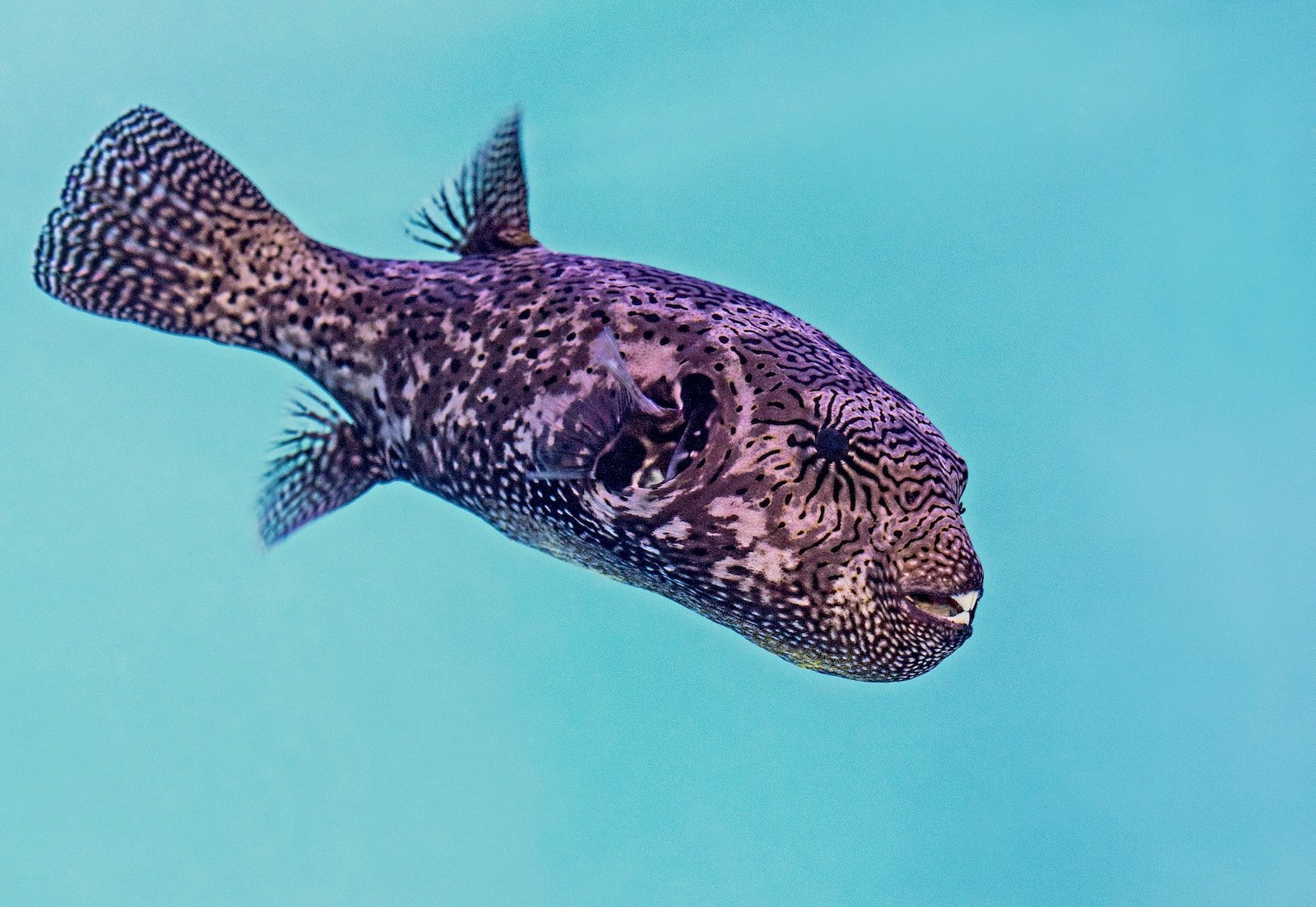
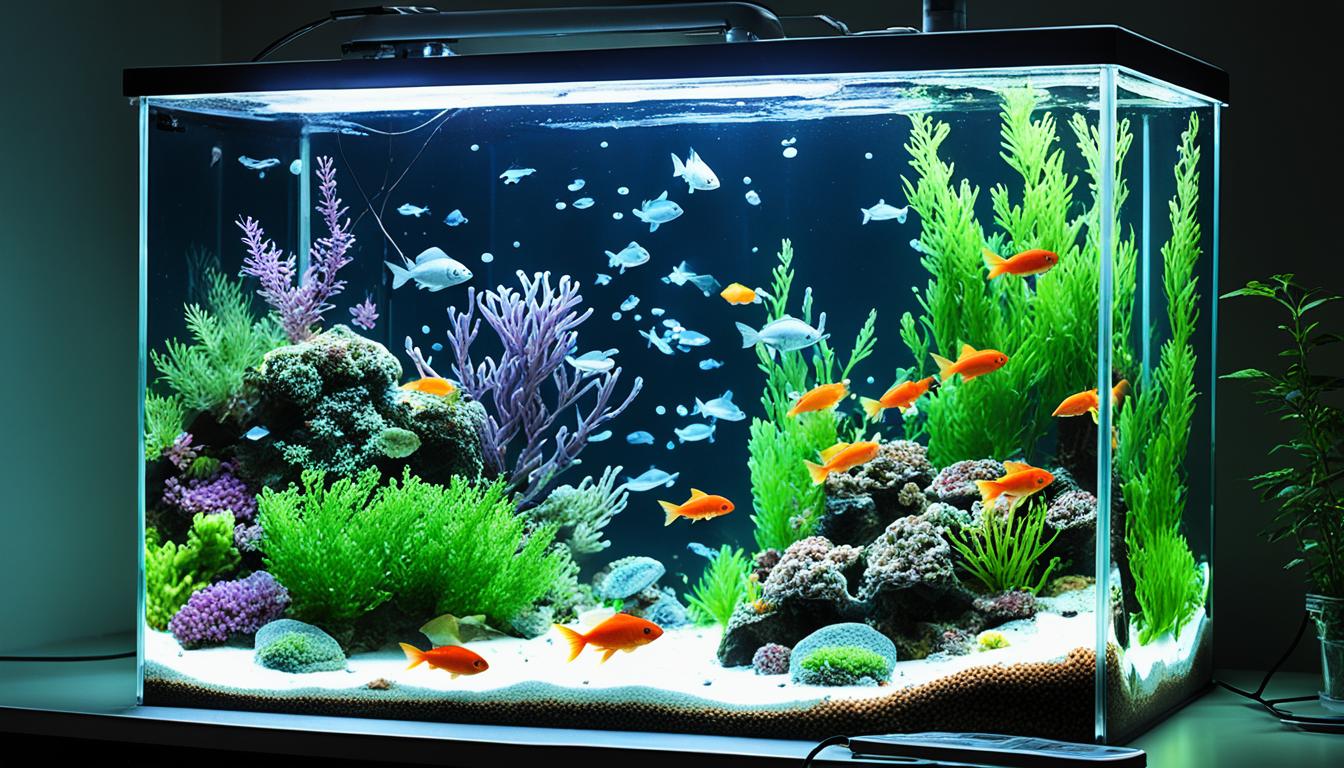
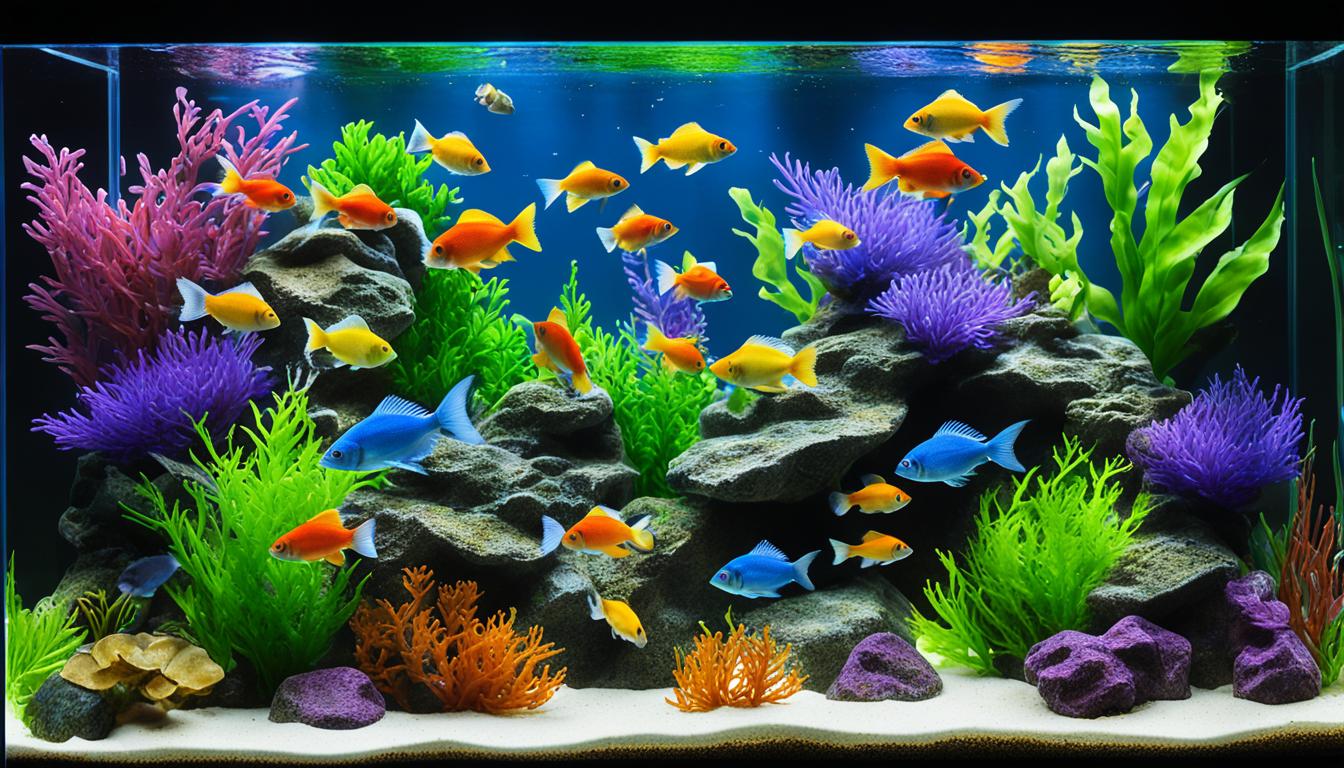






[…] Caring for koi fish requires proper attention and maintenance to ensure their health and well-being. Here are some essential tips and guidelines to help you take care of your koi fish: […]